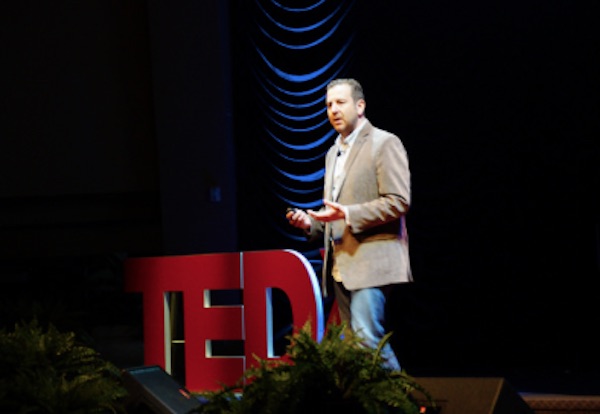Community
Are your kids safe online? Parents invited to hear online safety expert Paul Davis at St. Joseph High School

News Release from Red Deer Catholic Regional Schools
RDCRS offering social networking safety presentation
Red Deer Catholic Regional Schools is pleased to welcome social networking and online safety expert, Paul Davis to Red Deer to speak with middle school parents and students. This event is co-sponsored by the Smiles Thru Lindsey Foundation and the Red Deer Catholic Education Foundation.
The presentation on Monday, September 12 will run from 6:30 – 8:00 p.m. at St. Joseph High School and is free to attend.
Attendees are encouraged to register on Eventbrite.
Mr. Davis brings over 30 years of IT knowledge and expertise to his presentations. He has presented to over 640,000 students from grades 4-12 across North America, focusing on social media, sexting/child pornography, digital trails, smartphones, online security and more. He will cover current topics, technologies and trends in his presentations to students and parents with cyberbullying tying into the entire presentation.
“Through my experience as a principal working with young adults, I see the importance of empowering students and parents when it comes to social media, helping them learn how to be safe and set limits with their use. The risks that come with smartphones, technology and social media, continue to increase and in the school setting we see this everyday. I am excited to hear Paul’s message so we can continue to learn and grow together as a community, ensuring our students are safe and we as a community know how to protect them,” says St. Francis of Assisi Middle School Principal Gary Gylander.
Rick and Cindy More of the Smiles Thru Lindsey Foundation know all too well the importance of keeping youth safe online.
“On September 20, 2015 our daughter Lindsey lost her battle with depression. A disease she hid from us through high school. When we searched for answers, one of our conclusions attributed social media as a contributor to her depression. As parents, it is imperative we understand the dangers that surround our children around social media and the importance of our involvement. Paul Davis will open your eyes to a tech world that is not totally understood. We pray no parent experiences the loss we endure. Thank you to all that attend this presentation,” say the Mores.
Mr. Davis’ presentations are targeted so that the audience leaves with a wealth of knowledge and empowerment for their respective age level. He will be speaking to approximately 2,700 students in grades 6-9 during two, daytime sessions on September 12.
For more information on Mr. Davis, visit https://
Community
Support local healthcare while winning amazing prizes!

|
|
|
|
|
|
|
Community
SPARC Caring Adult Nominations now open!

Check out this powerful video, “Be a Mr. Jensen,” shared by Andy Jacks. It highlights the impact of seeing youth as solutions, not problems. Mr. Jensen’s patience and focus on strengths gave this child hope and success.
👉 Be a Mr. Jensen: https://buff.ly/8Z9dOxf
Do you know a Mr. Jensen? Nominate a caring adult in your child’s life who embodies the spirit of Mr. Jensen. Whether it’s a coach, teacher, mentor, or someone special, share how they contribute to youth development. 👉 Nominate Here: https://buff.ly/tJsuJej
Nominate someone who makes a positive impact in the live s of children and youth. Every child has a gift – let’s celebrate the caring adults who help them shine! SPARC Red Deer will recognize the first 50 nominees. 💖🎉 #CaringAdults #BeAMrJensen #SeePotentialNotProblems #SPARCRedDeer
s of children and youth. Every child has a gift – let’s celebrate the caring adults who help them shine! SPARC Red Deer will recognize the first 50 nominees. 💖🎉 #CaringAdults #BeAMrJensen #SeePotentialNotProblems #SPARCRedDeer
-

 Alberta7 hours ago
Alberta7 hours agoAlberta Independence Seekers Take First Step: Citizen Initiative Application Approved, Notice of Initiative Petition Issued
-

 Crime6 hours ago
Crime6 hours agoNational Health Care Fraud Takedown Results in 324 Defendants Charged in Connection with Over $14.6 Billion in Alleged Fraud
-

 Health5 hours ago
Health5 hours agoRFK Jr. Unloads Disturbing Vaccine Secrets on Tucker—And Surprises Everyone on Trump
-

 Bruce Dowbiggin8 hours ago
Bruce Dowbiggin8 hours agoThe Game That Let Canadians Forgive The Liberals — Again
-

 Alberta1 day ago
Alberta1 day agoCOVID mandates protester in Canada released on bail after over 2 years in jail
-

 armed forces1 day ago
armed forces1 day agoCanada’s Military Can’t Be Fixed With Cash Alone
-

 Crime2 days ago
Crime2 days agoProject Sleeping Giant: Inside the Chinese Mercantile Machine Linking Beijing’s Underground Banks and the Sinaloa Cartel
-

 Alberta2 days ago
Alberta2 days agoAlberta uncorks new rules for liquor and cannabis









